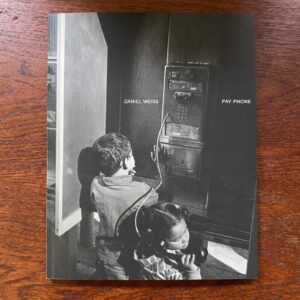JTF (just the facts): A total of 11 photographic works in color, alternately framed, and hung against white walls in the small front gallery and the larger back gallery spaces.
The following works are included in the show:
- 3 digital prints on paper, 2019, sized roughly 32×39, 39×47 inches, unique
- 5 digital prints on Dibond, 2019, 2020, sized roughly 49×99 (orientation variable), 49×61 inches, unique or edition of 2
- 1 set of four digital prints on Dibond, 2019, each sized roughly 8×8 inches, unique
- 2 pairs of digital prints on Dibond, 2019, 2020, each panel sized roughly 99×49 inches, unique or edition of 2
(Installation shots below.)
Comments/Context: For reasons that we as viewers can’t always understand, sometimes an artist becomes entranced with a particular subject, so much so that he or she can’t quite let it go, returning to it again and again over a period of decades. For the Dutch photographer Jan Dibbets, that stubbornly engrossing subject has been the glossy painted hoods of automobiles. As both a celebrated conceptual photographer and as a teacher at the Kunstakademie Düsseldorf, Dibbets has of course made images of many other subjects, but the aesthetic possibilities offered by the industrial colors of car hoods have repeatedly drawn him back, particularly in recent years.
The seeds of Dibbets’s specific interest were planted back in the mid 1970s, with a series of square format images he made of car hoods. Each was a cropped down view of a hood, with the polished surfaces gleaming with flares of shine and reflection and the various edges and contours of the cars providing a few linear interruptions. But mostly, these pictures were attentive color studies (which is what they were later titled as a group), each square a bold block of isolated red, green, blue, or some other car-appropriate hue.
Given the available technologies of the time, the original car hood photographs Dibbets made were analog. But in 2007, he decided to reprint a set of ten of the images as a portfolio (as seen in one of our Armory show reports from 2010, here), in a sense, giving them a new life. Soon afterward, he began to play with digital fragments of the pictures, both enlarging certain areas and changing the underlying color palettes, and the resulting new works, which pushed even further away from representation and toward painterly abstraction, were shown in New York at Gladstone Gallery in 2013 (reviewed here) and again in a group show at Peter Freeman in 2017 (here).
The story might have ended there, but Dibbets is now back for one more turn of the artistic crank. In his newest iterations (which he has titled “Billions of Universes”), he has pushed the digital color swatches further and further toward their inherent limits, seemingly searching for the place where the colors break down into jagged digital artifacts. For those familiar with the earlier car hood works, these images will seem altogether unrelated, until the backstory of their creation gets filled in – there is little visual evidence to connect the new works to the old ones, aside from perhaps some loose color affinities. Mostly, Dibbets has taken us somewhere entirely new (and entirely abstract), using the guts of his favorite subject matter as his starting point.
Dibbets isn’t the first photographer to be seduced by the strangeness of digital color, but he seems to have found his own original path into unpacking the unlikely mysteries of computationally constructed imagery. Down at this level of intense magnification, color breaks down into clusters of pixels and gatherings of jagged-edged abstract forms, which offer their own visual associations and echoes. Some look like topographical maps, with undulations marked by flattened peaks and valleys. Others approximate microscopic views of squiggling amoebas, or marbled Italian papers, with colors intermingled with curves.
Dibbets has found a surprising degree of compositional variation down at this invisible level. One sparsely colored work finds the color broken down into cross-shaped sparkles like a random assortment of digital scraps; another settles into the blocky green territory of Minecraft; and a third uses the same aesthetic to carve out forms that might be islands from swirled oceans of blue. Take a few steps back from any of these works and they resolve into something different – black pock marks or decay spots on fields of green, yellow, and purple; a swatch of blue that is breaking down into fogs of grey and cracks of black; and a bright white highlight that inexplicably shifts from red to blue in its shadows. That all of these works are “children” of the original car hoods some 50 years ago now is both tantalizingly possible (our minds love to search for linear causation and connection) and altogether mystifying.
Even if we can’t entirely connect the dots all the way back to a flare of light bouncing off a particular automobile, Dibbets’s works are engagingly brainy, in that we want to understand and complete the aesthetic path he has travelled. Down in the netherworlds of digital color, predictable representation ultimately gives way to something akin to randomness and uncertainty, and it is this magic that gives Dibbets’s abstractions their energy. Perhaps we will find a few years hence that Dibbets has gone yet another level or two deeper, enlarging these fields of shifting color into something even more gorgeously incomprehensible. The cars will be long gone, but the possibilities for experimentation might still be opening up.
Collector’s POV: The works in this show range in price from €40000 to €175000. Dibbets’s work has not been widely available in the secondary markets in recent years; while a few lower priced lots have come up for sale during that time, no meaningful pricing pattern can be extrapolated from so few data points. As such, gallery retail remains the best option for those collectors interested in following up.














